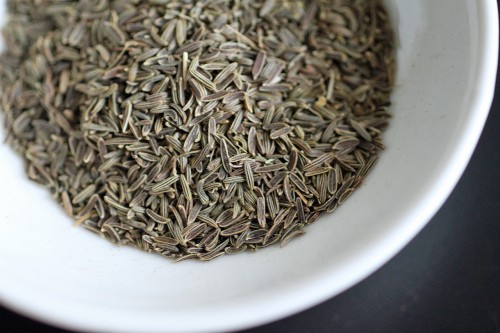Black Cumin
One of my favorite things about the smoked peach chutney I posted earlier this week is the quick, sharp bite of cumin that hits whenever I bite into one of the seeds. I left them whole in the chutney precisely for that reason – I love that subtlety. The chutney inspired me this week to talk about another cumin seed that isn’t featured as prominently in grocery stores as its cousin the traditional cumin seed, called black cumin.
If you google black cumin, a ton of links come up for nigella seeds, which is not correct. Both cumin and black cumin are from the parsley family, and black cumin is simply a darker-colored version of the traditional sort. It looks a lot like caraway and has a slightly different, more milder flavor than traditional cumin. Where cumin has a bit more earthiness and an almost gamey quality, black cumin is sweeter, delicate, with more of the pine-menthol flavors and even a nuttiness. To me, it doesn’t linger as much on the palate as regular cumin.
Another difference from traditional cumin is in its use – how and where it is added to dishes. Rather than being ground to a powder form, black cumin is often left whole. It is generally very lightly toasted, which highlights that nutty flavor even more.
Black cumin is featured in a lot of North Indian, Pakistani, Afghani, and Persian dishes, often referred to as kala jeera or shahi jeera. Rice dishes like biryani benefit from a sprinkling of these seeds, and they are often a first ingredient for curries and stews. I love that they are used in breads and plan to do some black cumin biscuits soon myself. I pretty much use it whenever I want a milder version of cumin, where I want it to highlight but not overpower. Let me know if you’ve ever worked with this spice before!


